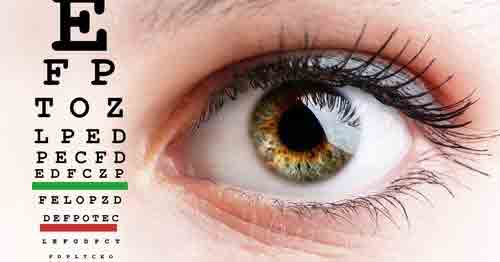Understanding Refractive Errors: A Guide for Patients
What are Refractive Errors?
Refractive errors are common vision problems that occur when the shape of the eye prevents light from focusing directly on the retina. This results in blurred vision. Refractive errors can be corrected with eyeglasses, contact lenses, or refractive surgery. The four most common types of refractive errors are myopia (nearsightedness), hyperopia (farsightedness), astigmatism, and presbyopia (age-related loss of near vision).

Symptoms of Refractive Errors
Common symptoms of refractive errors include:
- Blurred vision.
- Double vision.
- Headaches.
- Eye strain or discomfort.
- Difficulty reading or seeing up close.
- Squinting.
Causes and Risk Factors
Refractive errors are caused by an imperfect shape of the eye, which affects how light rays enter the eye and focus on the retina. Factors that increase the risk of refractive errors include:
- Family history of refractive errors.
- Age (presbyopia typically affects adults over 40).
- Prolonged periods of close-up tasks, like reading or computer work.
- Eye injuries or surgeries.
Types of Refractive Errors
There are several types of refractive errors:
- Myopia (Nearsightedness): Distant objects appear blurry because light rays focus in front of the retina.
- Hyperopia (Farsightedness): Near objects appear blurry because light rays focus behind the retina.
- Astigmatism: An irregularly shaped cornea or lens causes light rays to focus on multiple points on the retina, resulting in blurred or distorted vision.
- Presbyopia: An age-related condition where the eye's lens loses flexibility, making it difficult to focus on close objects.
Diagnosis
Refractive errors are diagnosed through a comprehensive eye exam, which includes:
- Visual acuity test: Measures how well you see at various distances.
- Refraction assessment: Determines the correct prescription for eyeglasses or contact lenses.
- Keratometry: Measures the curvature of the cornea.
- Retinoscopy: Examines how light reflects from the retina to determine the refractive error.
Treatment
The treatment of refractive errors includes:
- Eyeglasses: The simplest and safest way to correct refractive errors.
- Contact lenses: Provide a wider field of vision and greater comfort for some people.
- Refractive surgery: Procedures such as LASIK, PRK, and LASEK reshape the cornea to correct the refractive error.
Regular eye exams and updating prescriptions as needed can help manage refractive errors effectively.
Prevention
While refractive errors cannot always be prevented, certain measures can help reduce the risk:
- Regular eye examinations: Detect problems early and ensure clear vision.
- Managing overall eye health: Protect your eyes from injury and strain.
- Wearing appropriate eyewear: Use sunglasses to block UV rays and protective eyewear during activities that may cause eye injury.
